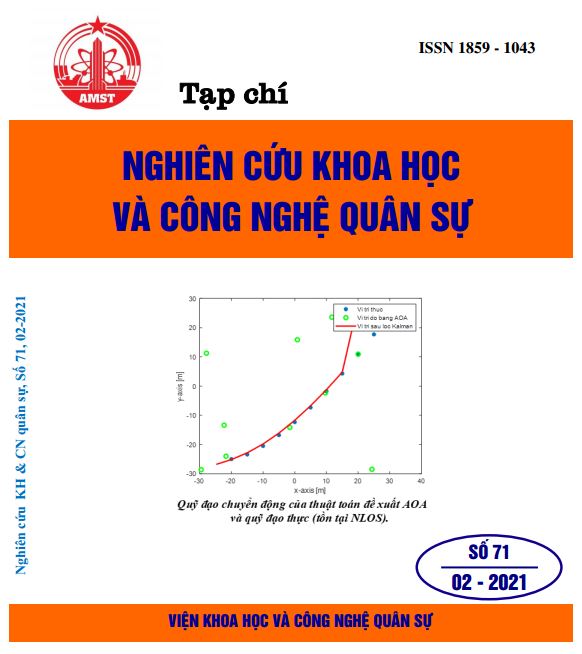MÔ PHỎNG NHIỆT, SO SÁNH CẤU TRÚC LÀM MÁT ĐỘNG CƠ SERVO KHÔNG ĐỒNG BỘ
308 lượt xemTừ khóa:
Động cơ servo; Mô hình nhiệt; Thiết kế tản nhiệt; Tính toán nhiệt; Tối ưu động cơ.Tóm tắt
Bài báo nghiên cứu mô phỏng nhiệt và so sánh các cấu trúc làm mát khác nhau của động cơ servo không đồng bộ. Với ưu điểm tốc độ tính toán gần như tức thời, quá trình thiết kế nhanh chóng phân tích được các thay đổi nhiệt trong động cơ, phần mềm Motor-CAD được sử dụng để lựa chọn các thông số liên quan quá trình phát nhiệt khi thiết kế tối ưu động cơ. Việc áp dụng mô phỏng nhiệt-điện từ trong quá trình thiết kế, giúp giảm yêu cầu về việc sản xuất nguyên mẫu và thử nghiệm, vì vậy, giảm thời gian nghiên cứu chế tạo sản xuất và chi phí. Dựa trên các kết quả phân tích nhiệt và giới hạn ngưỡng nhiệt độ của các thành phần trong động cơ, bài báo hướng đến hai mục đích: xem xét tối ưu các thông số động cơ và lựa chọn phương thức, cấu trúc làm mát để động cơ thiết kế tối thiểu hóa khối lượng hay giá thành sản xuất, trong khi vẫn tăng momen cực đại của động cơ servo.
Tài liệu tham khảo
[1]. Aldo Boglietti, Andrea Cavagnino, David Staton, Martin Shanel, Markus Mueller, and Carlos Mejuto, “Evolution and modern approaches for thermal analysis of electrical machines”, IEEE Transactions on Industrial Electronics, Vol. 56, (2009), no. 3, pp. 871-882.
[2]. D. A. Staton, A. Cavagnino, “Convection Heat Transfer and Flow Calculations Suitable for Electric Machines Thermal Models”, IEEE Transactions on Industrial Electronics, Vol. 55, No. 10, (2008), pp. 3509-3516.
[3]. A. Boglietti, A. Cavagnino, “Analysis of the Endwinding Cooling Effects in TEFC Induction Motors”, IEEE Transactions on Industry Applications, Vol. 43, No. 5, (2007), pp.1214 – 1222.
[4]. Arbab, N., Wang, W., Lin, C., Hearron, J.,Fahimi, B. “Thermal modeling and analysis of a double-stator switched reluctance motor”, IEEE Transactions on Energy Conversion, Vol. 30, No 3 (2015), pp.12 09-1217.
[5]. D. Staton, S. J. Pickering, and D. Lampard, “Recent advancement in the thermal design of electric motors”, in Proc. SMMA—Fall Tech. Conf., Durham, NC, (2001), pp 3–5.
[6]. A. Boglietti, A. Cavagnino, M. Lazzari, and M. Pastorelli, “A simplified thermal model for variable-speed self-cooled industrial induction motor”, IEEE Transactions on Industrial Application, Vol. 39, no. 4, (2002), pp. 723–730.
[7]. Staton, D.A., Boglietti, A., Cavagnino, A, “Solving the More Difficult Aspects of Electric Motor Thermal Analysis in Small and Medium Size Industrial Induction Motors”, IEEE Transactions on Energy Conversion, Vol 20, Issue 3, (2005), pp. 620 – 628.
[8]. M. Kasprzak, J. W. Jiang, B. Bilgin, and A. Emadi, “Thermal analysis of a three-phase 24/16 switched reluctance machine used in HEVs,” IEEE Energy Conversion Congress and Exposition, Proceedings. (2016), pp.1-7.
[9]. Dave Stoton, Livio Susnjic, “Induction Motors Thermal Analysis”, Strojarstvo Vol 51, No. 6, (2009), pp. 623-631.
[10]. M. Roffi, F. J. T. E. Ferreira and A. T. De Almeida, “Comparison of different cooling fan designs for electric motors”, 2017 IEEE International Electric Machines and Drives Conference (IEMDC), Miami, FL, 2017, pp. 1-7.







